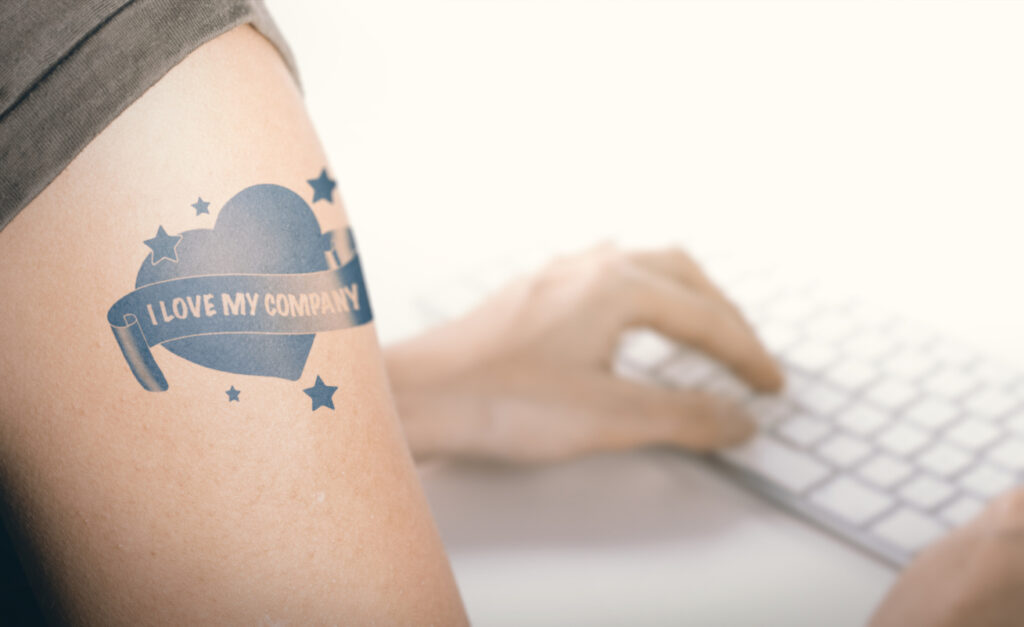Creating a happy, loyal workforce without the need for beer and beanbags.
There are many studies that have shown the commercial benefit to an organisation of happy workers – they stay in the job longer, work more efficiently and better together and take less stuff from the stationary cupboard.
Spend time nosing through Glassdoor or the Best Places to Work Awards and you’d believe that the path to engaged employees is paved with pool tables, cool sofas, beanbags, beer, pizza and stand-up desks.
As Simon Sinek explains in his brilliant Inside Quest speech great relationships – and workplaces – are not the result of ‘big gestures’ but actually of many little gestures.
I’m not talking about the flash offices or the all-expenses paid staff nights out but lots of little acts of respect, gratitude, empathy and recognition between workers at all levels, not just from the boss to their team.
Running specific training to create an environment where these micro-acts are habit rather than exceptions to the rule is tricky. Often the very people whose behaviour you want to change are those who think the training is ‘for everyone else’.
Here are some easy ideas to help you to create a great and happy workplace.
‘Not always on’ practices
Have a ‘no email or work before 8am and after 6pm’ policy. A number of leading German businesses including VW and BMW have programmed their email servers not to deliver email from 30 minutes after they close for the day until 30 minutes before they start again the next day.
There are exceptions of course in case of emergency contact being needed, but the objective is to give employees genuine down-time and ensure a healthy work life balance exists.
Device shelves in meeting rooms
Equip all meeting rooms with a shelf or cupboard for all meeting attendees to leave their phones when they arrive in the room. The aim is to make sure that they all actually look at each other, listen, engage and interact. You’ll soon find that meetings are quicker, more focused and more effective.
Unsolicited public praise
Most people like to be praised, but they like to be praised in public even more. The trouble is that opportunities to do this are probably not frequent enough to give praise to everyone who has earned it. Even if you do get the chance, it’s over very quickly and soon forgotten by others.
The concept of a ‘job for life’ is pretty unrealistic nowadays, so old-fashioned incentives like giving a gold watch for 25 years of service does little to inspire 21st century employees.
A nice way to make the praise permanent and more widely recognised is to provide someone with an unsolicited testimonial on LinkedIn. Many people are embarrassed to ask for testimonials, so this small gesture can really give them a boost in confidence.
A testimonial on LinkedIn lasts longer and is seen by a much wider audience than just fellow employees. Don’t worry about this tactic leading to your best employees getting poached away because it is actually gestures like this that are more likely to keep them loyal to your business.
Eye contact rules
We’ve all felt the frustration of trying to have a conversation with someone who seems more focused on their screen or phone. When your manager acts in this way they imply that you’re not that important.
If this happens regularly, it can have a long-term effect on an employee’s morale, commitment or engagement.
As the leader of a business why not implement a rule where laptops are closed or phones placed screen down during conversations? It seems like small thing, but I guarantee it will a send a strong message that you care about your team.
Short long service
The concept of a ‘job for life’ is pretty unrealistic nowadays, so old-fashioned incentives like giving a gold watch for 25 years of service does little to inspire 21st century employees. However, this doesn’t mean that rewards for service are irrelevant. They are still appreciated – you just need to change tactics a little to bring them up to date.
Small gestures can be a lot more meaningful than large extravagant gifts or nights out.
SweetGreen – a U.S healthy restaurant chain has come up with some fun, innovative and cost-effective ways to celebrate employees’ service milestones. After one year, staff are given a pair of limited edition green Converse trainers. After two years they get an iPod in the same green colour and after three years a limited edition bike in – you guessed it – green.
Of course, you don’t have to reward people with material gifts – you could simply give them some time off or even a sabbatical for big milestones like five years.
Lunchtime learning
Job related training is important for equipping employees with skills and knowledge, but it doesn’t usually extend to helping with engagement or more informal networks that are the all important components of a business with good ‘social capital’.
US Healthcare company Patients Like Me have come up with a brilliant concept to help engage their employees. Every month they offer free educational lunches for the whole team. Sometimes they bring in external speakers and other times they have employees deliver the session.
Session leaders are encouraged to make the learning fun and interactive – to get people doing things together with people they wouldn’t normally interact with. Topics range from work or business related topics through to home or sports related hacks and tips.
Thanking family
When someone puts in extra effort or does something special, almost every business I know thanks these employees by giving them something directly.
Very often these employees have only been able to produce this result because their partner at home has supported them in some way. So instead of thanking your employee directly, why not send a hand-written card, with a personal specific thank you to the partner, thanking them for their support.
This will be remembered and appreciated for much longer. You could even raise the stakes by including some money or vouchers to do something special and hopefully create a lasting memory for both parties.
What next?
These are just a few ideas, but I hope it gives you some inspiration to search for innovative ways to demonstrate respect, gratitude, empathy and recognition to your employees for good work.
As I hope I’ve demonstrated, small gestures can be a lot more meaningful than large extravagant gifts or nights out and can help to create a happy, engaged workforce that people want to be a part of.
Want more advice on engaging your employees? Read Three strategies businesses should adopt to retain talent.






